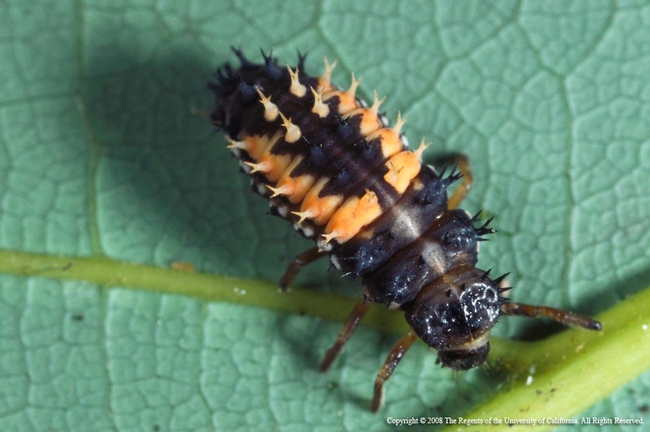Invertebrates
By Jutta Thoerner UCCE Master Gardener
What can I do now to reduce damaging insect's populations in my garden prior to spring? Erika in Grover Beach
You probably heard the Master Gardeners talk about fall and winter clean up in the garden. The main reason we encourage gardeners to remove fallen leaves and other discarded plant material is to minimize the potential for insects to overwinter in your garden litter. There is a huge difference in providing “clean” mulch which is properly prepared compost versus spreading insect infested plant debris throughout the garden. Another source of spring insect trouble is the expired fruits and nuts left hanging on trees. These old and shrunken fruits are called tree “mummies”. Apple moths, walnut husk flies, and almond navel orangeworm are just a few examples of insects whose numbers can be greatly reduced by simply cleaning up on and around trees. Play it safe and dispose of all discarded plant material. Move it an operating composting system, or add it to the green waste can. Many insects can overwinter happily with our low or no frost zones.
When you lay out your vegetable plots this winter, dedicate one corner for a beneficial insectary planting and another area to attract the harmful insects. By providing a constant source of blooming plants (insect food) in your beneficial corner, you'll get a head start on developing a population of pollinating insects. You might be able to attract those tiny beneficial wasps that feed on or parasitize certain damaging insects like aphids and tomato hornworms. To attract harmful insects, think back to which plant attracted the most insect pests? In my garden, certain cabbage, some winter greens, and beans are the sacrificial plants. They get planted earlier than my main crops and I have very good luck shaking the plants and seeing many of the chewing insects drop in my soapy pale.
Lastly, invest today in row covers for your small seedlings. Garden catalogs sell several models in a range of thicknesses to best suit your climate. They completely protect your tender shoots until it is safe to uncover them and let the pollinators do their job.
For more information and photos of beneficial insects, visit http://www.ipm.ucdavis.edu/PMG/NE/index.html
